Kingdom of Württemberg (1805-1918) 19th century
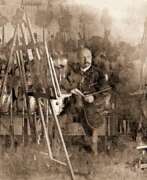

Louis Braun was a German painter of the second half of the 19th and early 20th centuries. He is known as a painter and teacher and is considered one of the most famous German battle painters.
Louis Braun was a war painter for the Austrian army during the Austro-Prussian-Danish War in 1864, and he created several battle paintings commissioned by Emperor Franz Joseph I of Austria. He also accompanied Prussian troops during the Franco-Prussian War of 1870-1871, creating paintings on this theme. Brown's panoramic painting "Battle of Sedan" was a great success, for which the artist was awarded the title of professor at the Academy of Munich in 1902.
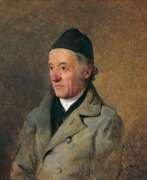

Jakob Gauermann was a German artist of the late eighteenth and first half of the nineteenth centuries. He is known as a painter and graphic artist who originally worked as a stone carver.
Jakob Gauermann became famous for his works depicting the nature of mountainous regions. He created numerous landscapes of Swiss landscapes and mountainous regions of Austria. His creative legacy includes a limited number of oil paintings and a significant number of watercolors.
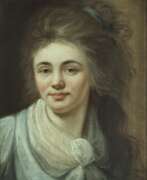

Ludovike Simanowiz was a German portrait painter celebrated for her classical style and intimate depictions of her contemporaries. Born into a military family, her artistic talent was nurtured from an early age, despite the challenges women faced in accessing formal artistic education during the late 18th century. Through private lessons with Nicolas Guibal and later studies under Antoine Vestier in Paris, Ludovike Simanowiz honed her skills, enabling her to capture the essence of her subjects with sensitivity and depth. Her journey was marked by resilience; after fleeing Paris due to the revolution, she continued her art while supporting her family through teaching and commissions.
Ludovike Simanowiz's works, primarily portraits, are known for their emotional depth and technical precision, reflecting her experiences and the cultural milieu of her time. Her portraits of Friedrich Schiller and his family, alongside self-portraits and depictions of other notable figures, remain significant contributions to classical portraiture, capturing the intellectual and cultural vibrancy of her era. Despite the personal challenges she faced, including caring for her paralyzed husband, Simanowiz's legacy as a pioneering female artist endures, with many of her works residing in private collections and commemorated in the Municipal Museum of Schorndorf.
Her story is not just one of artistic achievement but also of perseverance in the face of societal constraints, making her an inspiring figure in the history of art. Collectors and art experts continue to value her contributions to the European art scene, recognizing her as a significant figure in late 18th-century art.
For collectors and experts in art and antiques, Ludovike Simanowiz's oeuvre offers a fascinating glimpse into the artistic and cultural history of her time. Her life's work demonstrates the remarkable ability of art to capture the human spirit, making her portraits highly sought after for both their historical significance and artistic merit.
To stay informed about new discoveries, sales, and auction events related to Ludovike Simanowiz's work, signing up for updates is essential. This subscription ensures access to the latest information, allowing collectors and enthusiasts to remain at the forefront of developments in the world of art and antiques related to this remarkable artist.
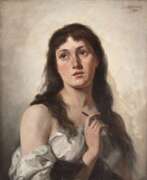

Sophie von Adelung (Russian: Софья Николаевна фон Аделунг) was a German writer and artist of late nineteenth and early twentieth century Russian descent. She wrote literary works, addressed mainly to young people, and often illustrated them herself.
Sophie von Adelung also published short stories translated from Russian into German. As a staff member, she wrote regularly for the magazines Die Fraurude, Fürs Haus, and Töchter-Album.
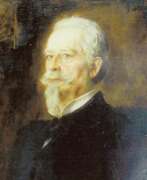

Otto von Faber du Faur was a German officer and painter of the second half of the 19th century. He is best known for his skillful depictions of battles. His works combine elements of impressionism and expressionism.
Faber du Faur was considered one of the leading German battle painters of his time, who devoted himself to historical painting. He chose the Napoleonic wars and military conflicts of his time as his main subjects, as well as scenes from Eastern life, which he was inspired by a trip to Morocco. His paintings are characterized by dynamic composition, dramatic gestures of figures and high contrast of colors. In the late period of his work, the artist paid special attention to skillfully applied color, which became the main expressive means in his works.
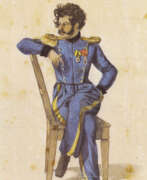

Christian Wilhelm von Faber du Faur was a German battle painter of the first half of the 19th century, the father of another famous battle painter, Otto von Faber du Faur. He is known for his lithographs of the events of the War of 1812.
Faber du Faur senior, who participated in the military campaign, left a series of detailed drawings in pencil, ink and watercolor depicting Russian landscapes, soldiers, crossings and battle scenes. These drawings were first published in 1816, and in 1827 the series was colored and engraved. Their historical and artistic significance is recognized by researchers of the artist's work. In the 1840s the series was published under the title "Sheets from my portfolio, sketched on the spot during the campaign in Russia".